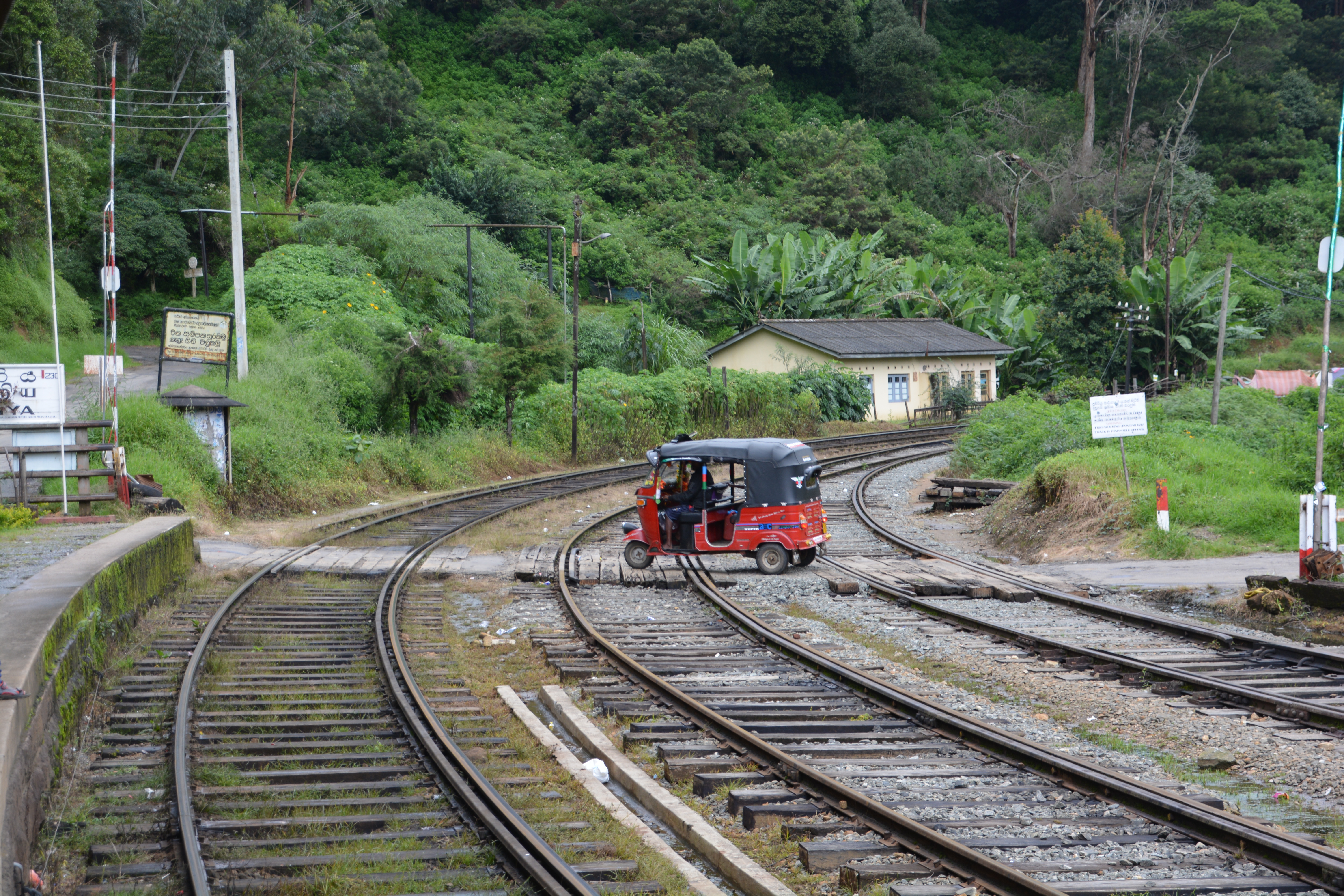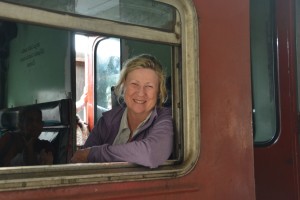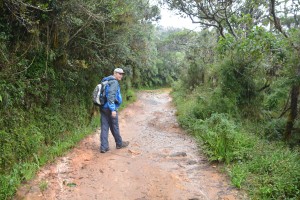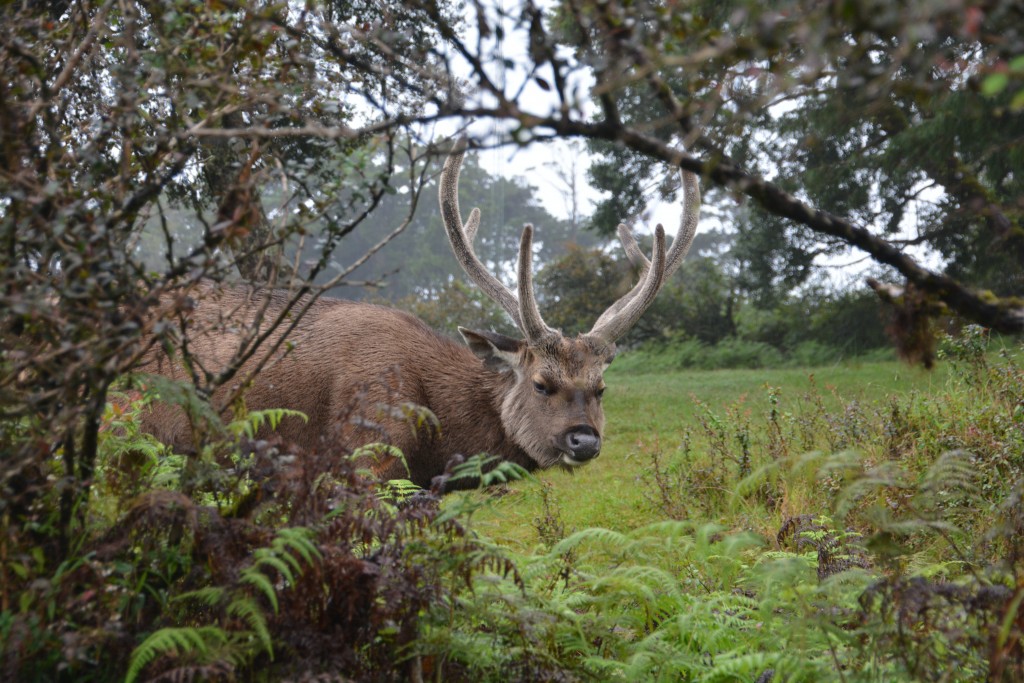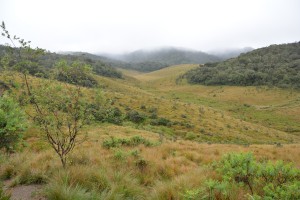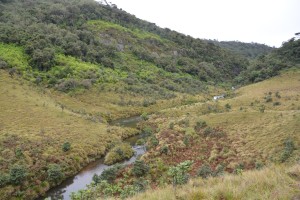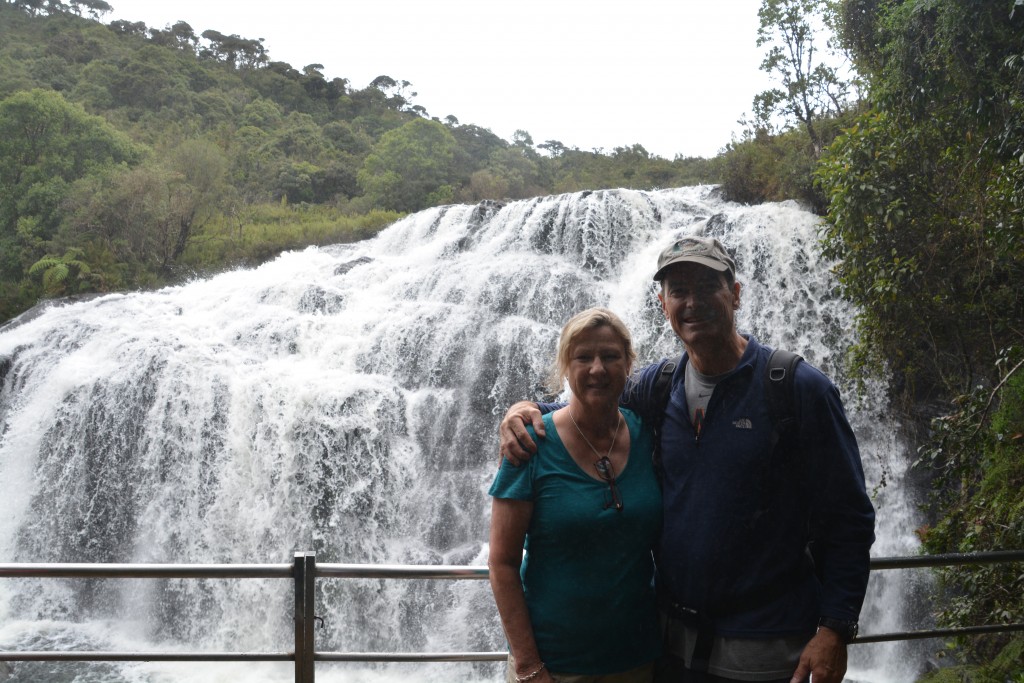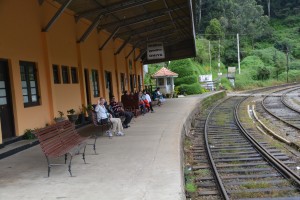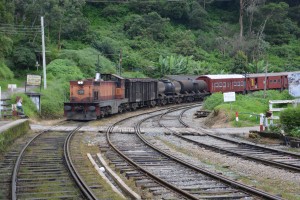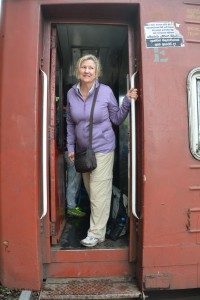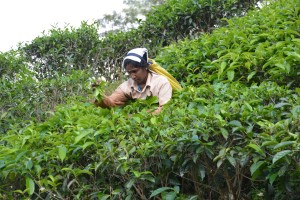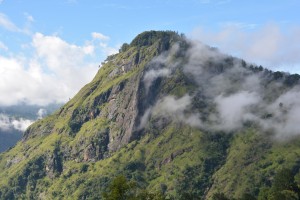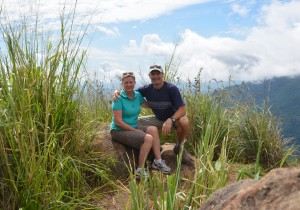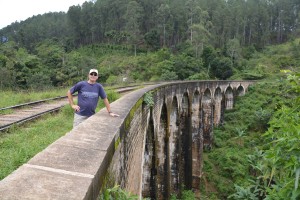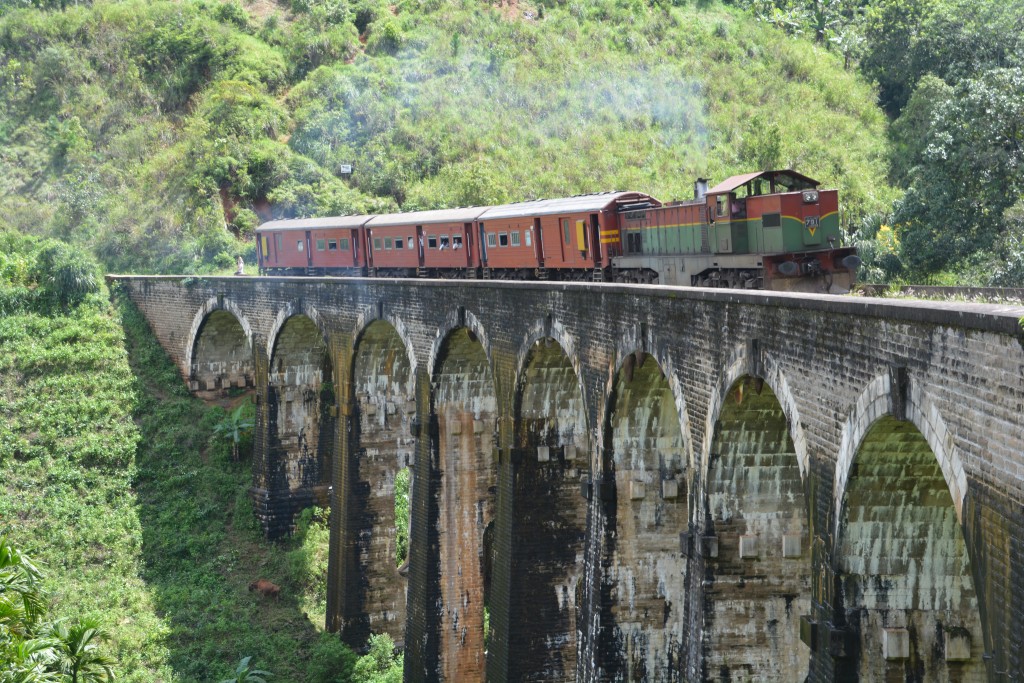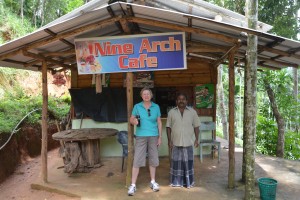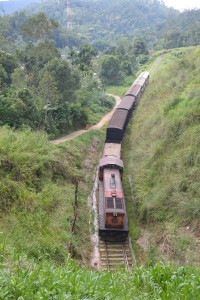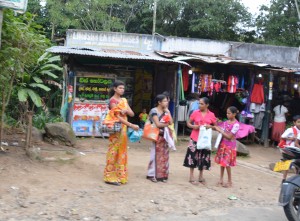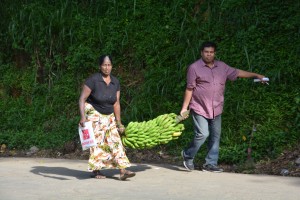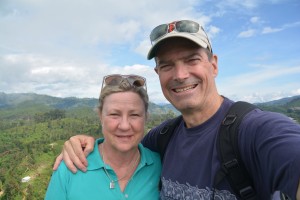Exploring by train and foot
There is as much to see in Sri Lanka that is off the main roads as on them. We learned this in the central highlands of the island when we temporarily abandoned Mr. T and our comfy air-conditioned car for other forms of transport. It all started at 5am with a call to prayer from the local mosque – we were soon up and ready to begin our walk to the World’s End.
Horton Plains National Park features some stunning scenery and an intriguing range of animals we hadn’t seen amongst the tea plantations and the small villages that line the road. But for travellers who are prepared to take an extra step, or two, it is most well known for a loop walk of about 9.5 km to visit a number of unique sites, including the so called World’s End. If you reach the World’s End you are standing on a cliff edge with a dizzying 870 metre vertical drop. We had to see that!
The uniqueness of Horton Plains National Park is that it is the confluence point of a number of ecological environments and features large fast flowing creeks, huge open plains, thick cloud forest, vast runs of stunted rhododendrons, many plants with small flowers, unique plants such as the dwarf bamboo and pest plants such as the English gorse. It also has herds of the large Sambar deer, many birds, different types of monkeys, allegedly leopards live there and alot of other stuff.
This was a beautiful walk early in the morning, new plants and terrain we are not familiar with, welcoming cool air, birds calling from the trees. We followed the wide path across the large open area and into the first set of gnarly trees, survivors of the harsh conditions at over 2,000 metres and home to many animals. The track was wet and in places a bit muddy but we picked our way along, stopping frequently to take photos.
After a while we came to a lookout called Little World’s End which we can only presume provided great views down into the void. But the morning clouds completely covered the scene and we could see nothing at all. So onward we went through more dense trees and across the occasional open paddock. After a joyous couple of hours walking in the cool air we came to the Greater World’s End, the highlight of the entire walk, which is said on a clear day to provide spectacular views to the ocean from a perch 870 metres high on the cliff.
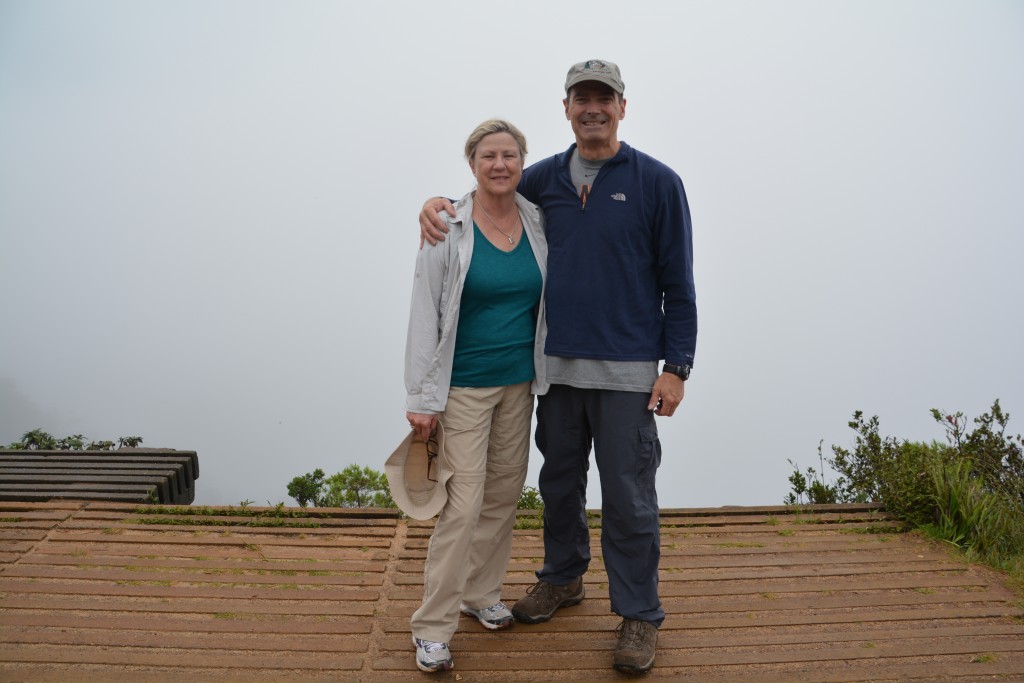
We’re standing at World’s End which was an eerily accurate description considering the complete white out over the cliff
Ah, did I say that on a clear day there are spectacular views? Not today I’m afraid, instead we had thick impenetrable clouds rising right to the edge of the cliff line so our stunning views were actually a big fat zero. Never mind, we had a snack and a rest, then moved on down the track which forms a large loop to other sites in the park. After passing through huge open fields sprinkled with stunted rhododendrons (we only found one that was blossoming) we met up with a large fast moving creek and eventually came to a steep drop where the water fell probably 15 metres in a dramatic fashion spread out over a wide rocky cliff. The walk had little surprises around every corner and and we loved walking on top of the world in a new country.
Following our descent to the nearby little village of Oliya our plan was to catch an old train still operating from the British era to the mountain town of Ella. This slow moving local train connects these mountain communities where there are few or no roads and provides a vital function for the locals by keeping them connected to the outside world.
As we sat at the platform waiting for our delayed train we watched a family of monkeys playing in the tall long branches of the nearby gum trees, the young ones playing games from branch to branch, Mum keeping a careful eye on them. Gum trees were brought in by the British to make durable railway sleepers over 100 years ago and have prospered here, now covering the mountains. And so it was that we have monkeys playing in gum trees, not something we get in Australia. Who would have thunk it?
Eventually our old train arrived but the third class carriages – which were all the carriages – were so crowded they barely gave us standing room in an open door way. This turned out to be a blessing as the old train clickity clacked along this ancient line and we could enjoy the fantastic views down into the valleys and through the tunnels, the mountain slopes covered in tea plantations and dotted with small homes, a beautiful almost timeless scene.
This trip was great fun, a real treat, and we made eight stops in little villages along the way before finally arriving in Ella where Mr. T was waiting for us. He whisked us down through the little town of Ella where we enjoyed the rest of the afternoon and evening. ‘Insinuation of Legend’ is the slogan on the huge billboard above our hotel advertising its features to all those who pass before it. We never got what the insinuation was or what the legend could be but it was a very reasonable three star hotel nevertheless.
The next morning we were back on the trail for a great little walk up nearby Little Adams Peak, a local feature popular with keen walkers. The trail led us on a gentle track winding its way around the contours of the mountain through rich thick tea plants and providing great views of the valley below. Within a few minutes we came to a group of women pickers, their large bags of picked tea strapped to their forehead, each one grabbing leaves with both hands until they were full and then throwing them over their head into their bags.
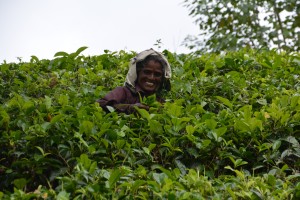
This has to be the hardest of work but the tea pickers seem to do it with a smile and a friendly wave
These Tamil women work hard, sometimes on very steep hillsides and amongst tea plants that can be up to their chin. They collect 10-12 kilos of teas each day in all kinds of weather for 400 Rupees – $4.00 per day. Despite their grim conditions they were friendly to the passing tourists, calling out Ayubowan and giving a little leaf-filled wave as they worked.
This was a beautiful walk, the temperature was perfect, skies mostly blue, the scenes were expansive and just stunning. From the top of Little Adams Peak, slightly panting and more than slightly sweating, we could see 360 degree views, the small town of Ella nestled in between the mountains, huge Ella Rock dominating the skyline on the other side of the valley, just breathtaking.
We abandoned the main tourist track and followed the faint trail even further along the ridge, a demanding and slightly dodgy little detour which rewarded us with further spectacular views into the valley and large waterfalls on both valley walls. We then found another tea pickers’ track through the tea plants growing on the steep slopes of the mountain and after following our nose for a fair ways eventually made it back to civilisation.
But the train ride yesterday gave us a new interest. Nine Arches Bridge is the longest bridge built by the British when they carved a path through these rugged mountains and laid down the original railroad tracks a hundred years ago. This bridge is a marvel of British engineering, such a remote and unsung place, to cut and carve stones to support this bridge of such a substantial span using unskilled labour and not a single piece of steel. The train line was completed by the British in 1921 and it still plays a critical part in the lives of these hard working people.
We walked across the bridge and after only a short wait heard the toot toot of a loud horn and the clickity clack of their wheels on old steel as the 90 year old train chugged across this grand old bridge. It was great fun to watch this little bit of history in action and think of the huge difference it has made to all the locals. Great stuff.
Flush with all this train stuff we decided to walk down the track back to our town of Ella without thinking about how far that might be. It was a pleasant walk along the side of the mountain but how far did we need to go? We could measure the walk by the old British distance marker signs (given in quarter mile increments) and we finally made it to Ella after about 2.5 kms. We had gone from train travellers to train bridge experts and now hobos walking along the train lines.
But wait, our train experience was not over yet. Mr. T had noticed how this whole train thing had kind of hooked us – at least for a day or two – so he took us to Demodara, a nearby village and train station where the British had to solve a significant engineering problem. From the village of Demodara they needed the train line to drop about 40 metres almost immediately so they could build a bridge across a deep creek and then continue along the valley to the next village.
The way they solved it was that after the train left the station it circled around the little mountain to its left, dropping as fast as it could until it was actually back at the station but now 40 metres lower. They then built a 120 metre tunnel that passed under the station and popped out on the other side before crossing the river on a sturdy stone-built bridge. Amazing.
As we stood there admiring the ingenuity needed to solve this problem, and with amazingly good timing, another old train, streaked in grease and grime but toot tooting happily enough, came into the station. We watched four locals get on and three locals get off before the train gave another toot and slowly rolled away. It circled the little mountain behind the station and then reappeared 40 metres below us before chug chug chugging through the tunnel under the station and on it’s merry way it went. Who knew trains were so interesting!
That night for dinner in Ella we accidentally chose a restaurant that did not serve alcohol (I know, how could we make such a rookie mistake?). The Curd Shop, as it was enticingly called, promised us a beer when we sat down but never delivered. The proprietor eventually admitted that the police were on to him for serving illegal beer and he couldn’t serve us. We had no choice but to abandon the Curd Shop and find a more suitable dining establishment.
After a couple of great walks and a crash course in colonial railway engineering we were now ready to leave the mountains and head south for the game parks and the beaches. Bring it on!
